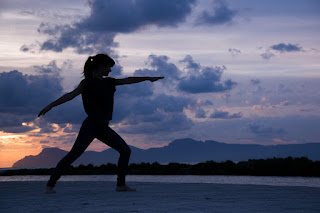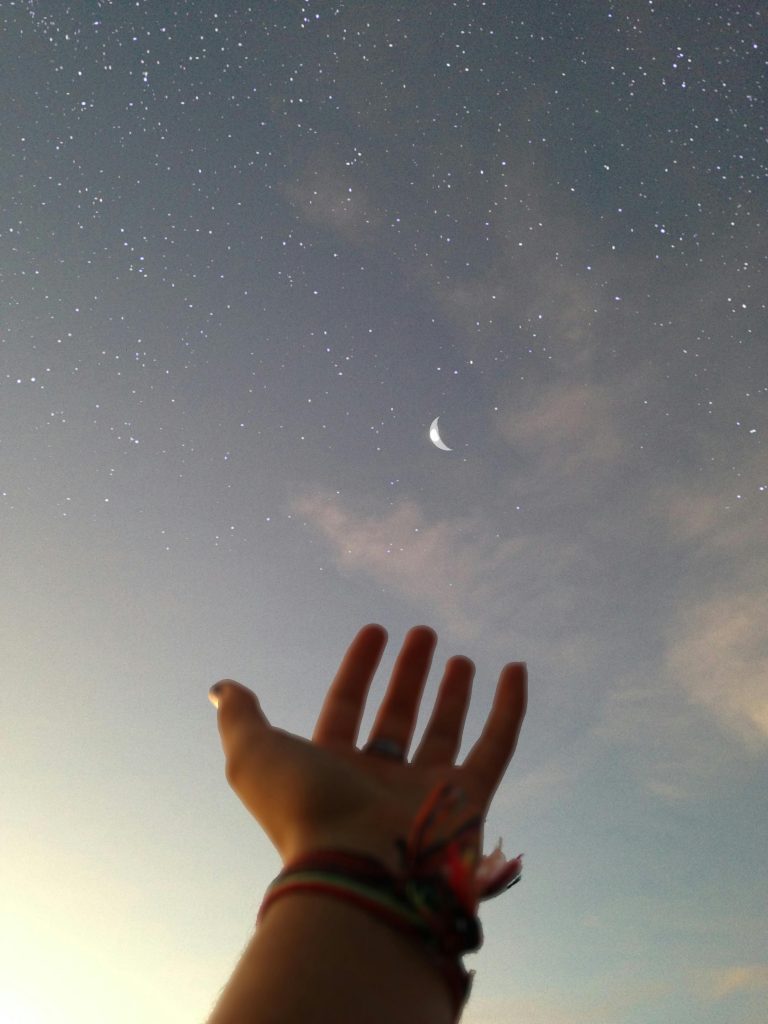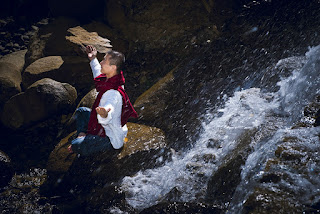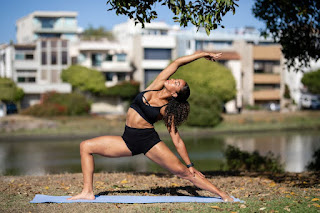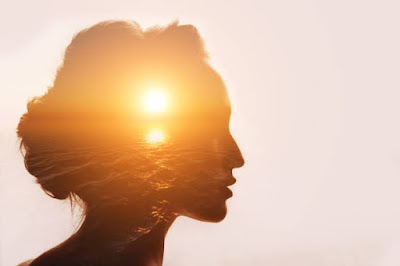How Yoga Poses Reflect Ancient Myths: A Spiritual Journey
Have you ever stepped into Warrior Pose and felt a surge of strength ripple through you, as if you’re channeling something ancient? You’re not imagining it—many yoga poses carry echoes of timeless myths, weaving stories of gods, heroes, and nature into every stretch and breath. In “How Yoga Poses Reflect Ancient Myths: A Spiritual Journey,” we’ll uncover the hidden tales behind your favorite asanas, revealing how they blend physical practice with profound meaning. From the fierce warrior Virabhadra to the transformative serpent deities, these poses aren’t just exercises—they’re gateways to a deeper connection with yourself and the past.
In some myths, characters enter a mystic trance, symbolizing deep spiritual transformation, much like the meditative state achieved in certain yoga poses.
Yoga’s roots stretch back thousands of years, intertwining with the rich mythologies of India and beyond. These stories, often tied to Hindu traditions, gave birth to poses that embody their essence—strength, balance, renewal. But this journey isn’t just about history; it’s about bringing those myths alive today. Imagine pairing Cobra Pose with a meditation on shedding old fears or holding Tree Pose while envisioning yourself as a steadfast oak from an ancient tale. By exploring how yoga poses reflect ancient myths, you’ll not only deepen your practice but also tap into a spiritual current that’s been flowing for millennia. Ready to step onto the mat and into these stories? Let’s begin.
The Roots of Yoga and Indian Mythology
Picture yourself in a quiet grove thousands of years ago, where sages moved through poses under the watchful eyes of the cosmos. Yoga wasn’t born in a vacuum—it emerged from the vibrant tapestry of ancient India, stitched together with myths that still resonate on our mats today. These stories, drawn from Hindu, Buddhist, and Jain traditions, aren’t just fanciful tales; they’re the heartbeat of yoga poses and mythology, shaping asanas into more than mere stretches. They’re expressions of the divine, the natural world, and the human spirit.
Take the myths of the Hindu pantheon, for instance. Gods like Shiva, the cosmic dancer, and Vishnu, the preserver, inspired practices that blend movement with meaning. Shiva’s fierce attendant, Virabhadra, gave us Warrior Pose—a stance of power rooted in a tale of vengeance and redemption, sparked by a father’s anger towards Shiva. Meanwhile, serpents slithering through Vishnu’s stories lent their grace to Cobra Pose, symbolizing awakening and transformation. These ancient yoga stories didn’t just name the poses; they infused them with purpose, turning physical shapes into living meditations. Even Tree Pose whispers of nature spirits and sages who stood rooted in contemplation, their stillness a bridge between earth and sky.
This isn’t dusty history—it’s a legacy you can feel. When you flow through a sequence, you’re stepping into a tradition where every posture tells a tale. The beauty of yoga poses and mythology lies in their duality: they strengthen your body while inviting your mind to wander through ancient realms. So, as we explore these connections, think of your practice as a dialogue with the past—one that’s as alive today as it was millennia ago. Curious about the stories behind your go-to poses? Let’s unravel them next.

The Symbolism of Yoga Poses
Yoga poses are more than just physical postures; they are rich tapestries woven with the threads of Indian mythology and culture. Each asana is designed to evoke specific emotional, mental, and spiritual responses, guiding practitioners on a journey inward. The warrior yoga poses, for instance, are deeply rooted in the story of Lord Shiva and his beloved Sati, embodying the eternal struggle between ego and compassion.
When you step into Warrior Pose, you’re not just striking a stance; you’re channeling the fierce energy of Virabhadra, born from Shiva’s grief and rage. This pose, along with its variations like Warrior III, symbolizes the qualities of a worthy husband—strength, courage, and unwavering loyalty. It’s a reminder that the physical body is a vessel for the divine, and through these poses, we awaken our own inner fire.
In Hindu culture, the entire heavenly universe is believed to reside within the human body. Yoga poses are designed to help practitioners tap into this cosmic energy, aligning their physical form with the divine. Shiva Shankar, often depicted in various yoga poses, represents the destruction of ego and the transformation of the self. His story, intertwined with that of Sati, speaks of self-sacrifice and devotion, inspiring us to cultivate these qualities in our own lives.
By embracing the symbolism of yoga poses, we deepen our understanding of ourselves and the world around us. Each pose becomes a meditation, a chance to connect with the ancient myths and wisdom that have shaped Indian culture for millennia. So, the next time you hold a pose, remember: you’re not just stretching your body; you’re engaging in a sacred dance with the divine.
Pose-Myth Connections
Yoga poses are like storytellers, whispering ancient wisdom with every breath you take. Imagine a grand feast where all the guests are present, each one a character in the rich tapestry of myths that shape our yoga poses. Let’s step into three iconic asanas—Warrior, Cobra, and Tree—and uncover the myths that shaped them. Each one carries a tale that can transform your practice into a spiritual adventure, blending movement with moments of stillness.
Warrior Yoga Poses (Virabhadrasana): The Fierce Guardian
Feel your legs root down and your arms stretch wide in Warrior Pose—one of the iconic warrior poses that make you feel ready to face anything. That’s no accident. This asana springs from the warrior pose myth of Virabhadra, a fearsome figure born from Shiva’s rage. The story goes that Shiva’s beloved Sati died at her father Daksha’s feast, and in his grief, Shiva tore out a lock of his hair, hurling it to earth. From it rose Virabhadra, a towering warrior sent to crash the party and exact justice. Each variation—Warrior I, II, III—mirrors his dynamic strength and focus.
Next time you hold this pose, let the spiritual meaning of yoga poses sink in. Imagine Virabhadra’s resolve flowing through you—unshakable, bold, alive. For a meditation twist, close your eyes after a few breaths and picture yourself standing tall amidst chaos, channeling that inner fire. It’s a reminder that strength isn’t just physical; it’s a state of mind.
Cobra Pose (Bhujangasana): The Serpent’s Awakening
Now, slide onto your belly and lift into Cobra Pose, chest open like a hood unfurling. This asana slithers straight out of cobra pose mythology, tied to the serpents of Hindu lore. Think of Shesha, the thousand-headed snake who cradles Vishnu as he dreams the universe into being, or the Kundalini energy coiled at your spine’s base, waiting to rise. These creatures aren’t mere reptiles—they symbolize transformation, shedding old skins for new beginnings.
As you arch upward, feel that serpentine grace. This isn’t just a backbend; it’s a chance to awaken something dormant within. Pair it with a meditation: Inhale deeply, envisioning a golden snake climbing your spine, shedding doubts with every breath. Exhale, and let go of what no longer serves you. It’s a quiet power, both grounding and liberating.
I just wrote an updated article digging deeper into the symbolisum of the serpent across cultures with a heavy focus on Kundalini Energy, Tapping into Kundalini Energy Safely: A Guide to Gradual Awakening.
Tree Pose (Vrikshasana): The Roots of Stillness
Stand tall in Tree Pose, one foot pressed against your thigh, arms branching skyward. You’re not just balancing—you’re tapping into ancient yoga stories of sages and nature spirits. In Indian lore, trees were sacred, home to deities and symbols of life’s quiet endurance. Yogis stood in meditation like this, rooted yet reaching, mirroring the steadfastness of an oak or banyan. Some say this pose echoes Vishnu’s avatar as Vamana, who grew from a dwarf to a giant, spanning earth and sky with one step.
Feel that duality as you sway slightly—grounded, yet expansive. The spiritual meaning of yoga poses shines here: you’re both the tree and the seeker beneath it. For a meditation boost, focus on your breath as roots sinking into the earth, your gaze lifting like leaves to the sun. It’s a practice in patience, a living link to the past.
These poses don’t just stretch your body—they stretch your imagination. Each myth adds a layer of depth, turning your mat into a canvas where history and presence collide. Want to feel it for yourself? Let’s weave them into a practice next.
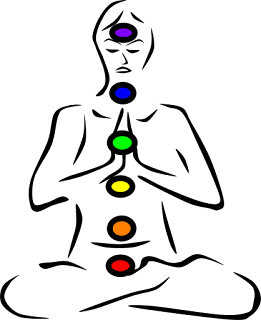
Deepening Yoga Practice with Myths
You’ve felt the power of Warrior, the grace of Cobra, and the stillness of Tree—now imagine weaving their myths into your practice. This is where yoga transforms from a routine into a journey. Meditation with yoga myths doesn’t just stretch your body; it stretches your soul, letting you embody these ancient tales in a way that feels personal and alive. Incorporating the concept of a mystic trance can enhance your meditation, allowing you to experience a deeper spiritual connection during your practice. The best part? You don’t need to be a scholar to do it—just a willingness to listen to the stories your poses tell.
Try this simple sequence to bring it all together: Start in Warrior Pose, legs strong and gaze steady, and picture Virabhadra’s fiery resolve igniting your courage. Flow into Cobra Pose, lifting your chest as if shedding an old skin, letting the serpent’s energy ripple through you. Finish in Tree Pose, rooting down like a sage under a banyan, your breath steady as branches sway. Hold each pose for five deep breaths, and between them, pause. Close your eyes and let the myth sink in—maybe it’s Shiva’s rage, Vishnu’s dreaming snake, or a forest spirit whispering wisdom.
This yoga practice with mythology isn’t about perfection; it’s about presence. The myths remind us that every movement carries meaning, every stillness a chance to reflect. You might find Warrior steadies your focus during a tough day, or Cobra lifts you out of a rut. It’s your story now—take it off the mat and into your life.
Stepping onto your mat is more than a workout—it’s a chance to dance with the past. In “How Yoga Poses Reflect Ancient Myths: A Spiritual Journey,” we’ve uncovered how Warrior Pose channels Virabhadra’s fierce spirit, Cobra Pose awakens the serpent’s transformative power, and Tree Pose roots us in nature’s quiet wisdom. These aren’t just shapes; they’re threads in a tapestry spun from ancient yoga stories, blending body, mind, and spirit into something timeless. Every breath you take in these poses is a nod to the sages, gods, and myths that came before us.
